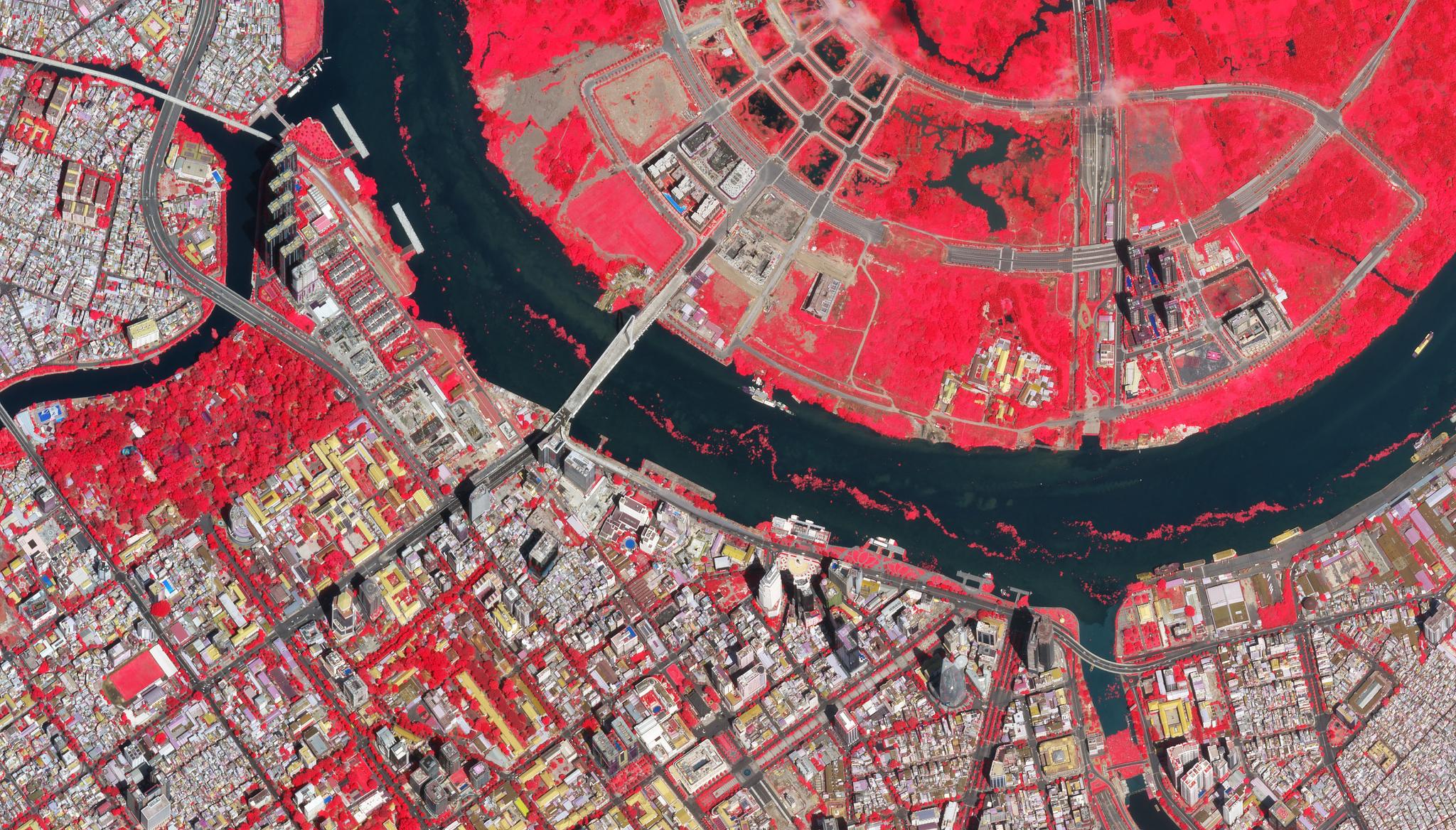NOAA Contracts with Planet to Gain Situational Awareness of Oil Spills, Marine Debris, and Marine Life

Planet SkySat false color image (near-infrared) of Ho Chi Minh City, Vietnam. NOAA has used such analyses on the Saigon River region to distinguish between marine debris and marine vegetation for their reports. © 2022, Planet Labs PBC. All Rights Reserved.
NewsWe are proud to be providing our data to the National Oceanic and Atmospheric Administration (NOAA) who are leveraging our PlanetScope and SkySat products to gain oceanic insights by evaluating oil spills, tracking marine debris, detecting vessels, and identifying large marine mammals like whales.
In 2004, Hurricane Ivan caused severe damage in the Gulf of Mexico, including the collapse and sinking of an oil platform. Crude oil from this platform continued to leak for over a decade, in what would become the longest running oil spill in United States history. NOAA began tracking the region with government-provided satellite data to generate reports on the situation. In 2018, NOAA reached out to Planet to explore how having a perspective of change on a near-daily basis around the platform could help inform their work.
“With rapidly changing activity in the ocean - from increasingly severe storms to growing industrial demands - I’m so glad that NOAA is able to use our datasets to continue their vital efforts to protect coastal communities and ecosystems from hazards like oil spills and illegal fishing,” said Planet Federal’s Vice President Jon Powers.
Using our PlanetScope imagery which provides near-daily imagery at 3 m resolution, NOAA set up an Area of Interest (AOI) around the leaking oil platform and received timely imagery of the region, supporting their evaluations of the quantity of oil leaking into the surrounding environment. These updates were shared within their Marine Pollution Surveillance Report. Following this work, NOAA expanded their work us, and today they observe a large region covering approximately 35,000 sq km in the Gulf of Mexico.

By having this frequent perspective, NOAA monitors a number of platforms, looking to identify oil spills early on. This near-daily data helps NOAA’s audiences stay informed on oil spills in the region. Their regular reports on the oil platforms are distributed to a community including the Bureau of Ocean Energy Management (BOEM) and the Bureau of Safety and Environmental Enforcement (BSEE), which are integral government departments that support regulations and enforcement for environmental protection and oceanic activities.
“Working with Planet, NOAA gets a more complete and frequent stream of information about the status of our oceanic and coastal world. Planet's high-cadence imaging helps us identify and track potential oil spills, and with tasking capabilities, we've advanced our situational awareness for vessel monitoring or marine debris,” said Jerome Fisher, Physical Scientist at NOAA.
NOAA also leverages our tasking capabilities with SkySat’s 50 cm resolution imagery to gain deeper situational awareness of activities happening in sea waters. For example, with oil spills, they are able to identify details of operational facilities and delineate oil spread with greater accuracy. SkySat further enables them to identify illegal fishing vessels operating in “no-go” or marine protected areas where fishing and traversing is prohibited due to potentially vulnerable coral reef communities. These tasking efforts have also been used by NOAA to monitor large humpback whale migrations and identify beached marine mammals.
SkySat imagery is also being evaluated by NOAA analysts for its ability to show marine debris, either at sea or in rivers. Its high resolution makes it a good candidate for debris detection in situations where other satellite imagery would not be effective.

Ready to Get Started
Connect with a member of our Sales team. We'll help you find the right products and pricing for your needs

